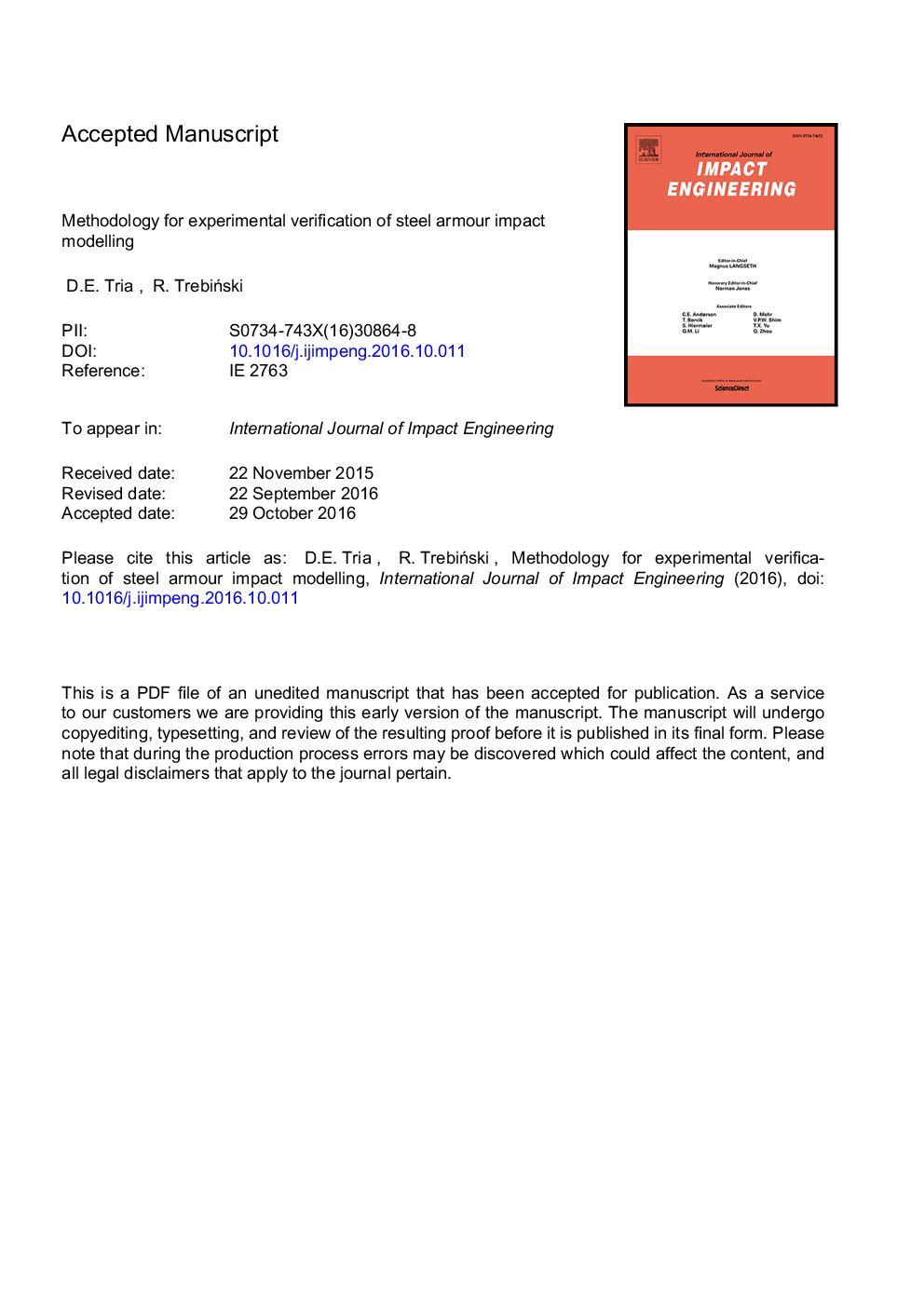| Article ID | Journal | Published Year | Pages | File Type |
|---|---|---|---|---|
| 5015639 | International Journal of Impact Engineering | 2017 | 35 Pages |
Abstract
We present a novel methodology to experimentally verify constitutive models and numerical algorithms used in terminal ballistics of small arms ammunition. The methodology comprises of the following elements: identification of material models in a set of independent tests, terminal ballistics testing of conditions covering the most important cases of bullet-target interactions, while providing enough data to assess the scatter of parameters measured in the experiments and to create a measure characterising deviation of modelling results from the experiments. To meet the objectives of this study, 7.62Â mm armour-piercing ammunition was used to perforate steel armour plates at ordnance velocity. Several parameters that characterise bullet velocity and path, plate deformation and ductility were measured and used as reference data for the verification of models. Relatively complex and simple constitutive and failure models implemented in the Finite Elements (FE) code LS DYNA were used. Finally, solid Lagrange and hybrid solid/Sooth Particles Hydrodynamics (SPH) discretisation methods with detailed models of the bullet and target are presented and different findings are compared with ballistic test results. The methodology shows a significant efficiency in the assessment of the adequacy of models. In this study, stress triaxiality and strain rate based models were found to give results in good agreement with experimental results, and several physical mechanisms are well predicted.
Related Topics
Physical Sciences and Engineering
Engineering
Mechanical Engineering
Authors
D.E. Tria, R. TrÄbiÅski,
